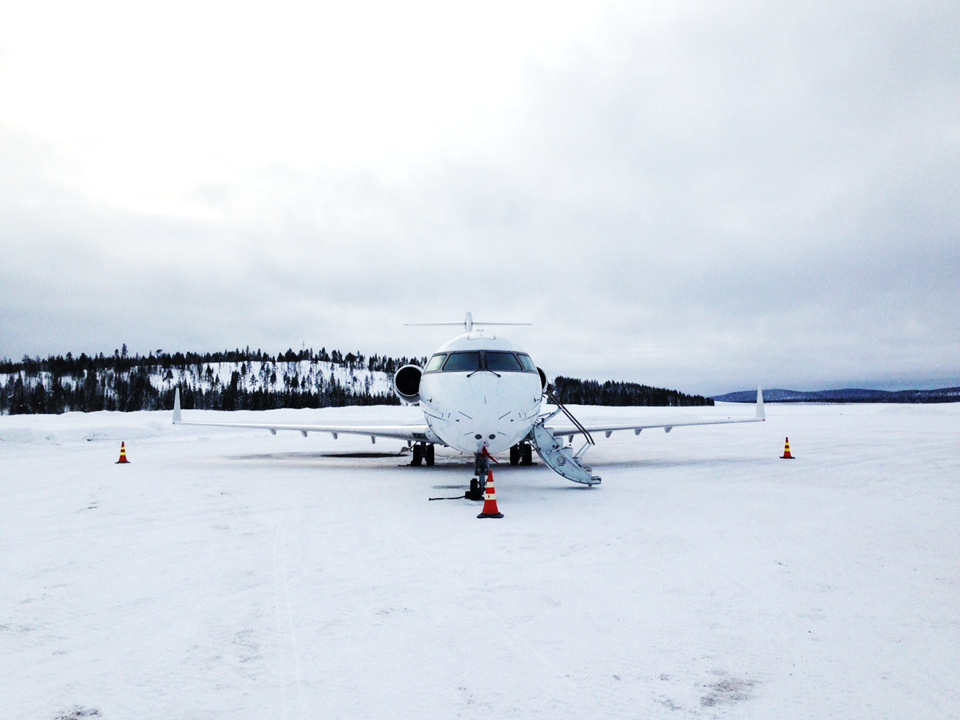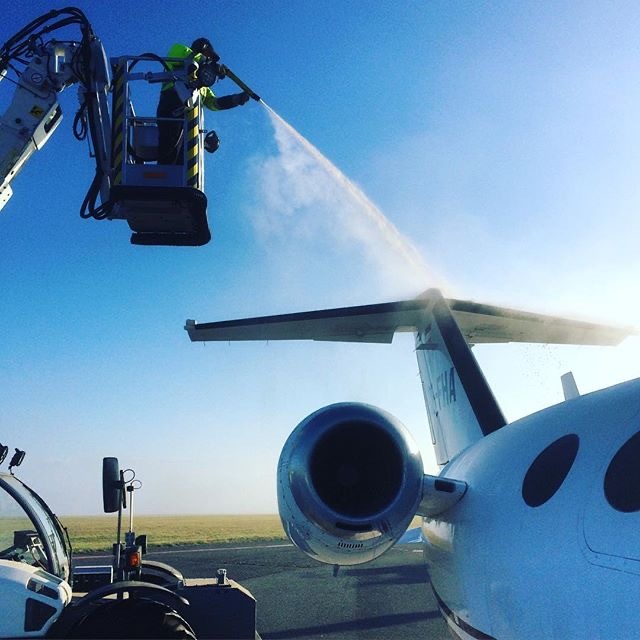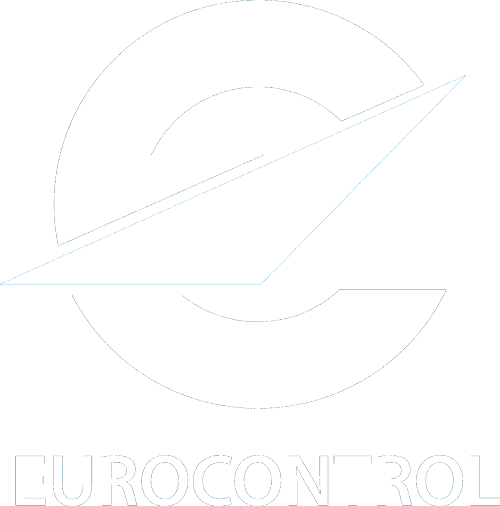De-icing a private jet 02/10/2021

FINLAND – Helsinki Airport – Tarmac: It is 7pm and the outside temperature is around -10°C (14 °F). I am early for my departure in a private jet to go home after a day’s work. The captain tells me that the aircraft has to be de-iced before leaving.
I get on board and we wait for the de-icer to finish spraying the wings of the plane. After a few minutes of intensive watering of the aircraft and a slight smell of almonds, we can take off.
Like your car, when it is not in the garage, it will be subject to the weather and may be covered with ice or snow. While a scratch and a bit of elbow grease will be enough to remove the frost from your car, the plane needs to be completely de-iced in order to take off safely.
Why and how to de-ice an airplane | DECODING |

The principle is simple. It is necessary to remove snow or frost that may have accumulated on the cabin of an aircraft. It can weigh down or change the aerodynamic structure of the aircraft. This would reduce the aircraft’s lift and affect its performance.
The frost can also disrupt the mechanics of the moving parts of an aircraft, such as the control surface or flaps.
For these reasons, the captain decides to use the de-icer to remove the frost or snow from the aircraft by spraying it with a liquid heated to 180°C (356°F). This liquid, composed of ethylene glycol, will then melt the frost or snow while protecting the aircraft several hours after its application.
How much does it cost?
This depends on 2 main factors: the size of the aircraft and the thickness of the frost.
Indeed, the liquid used to de-ice aircraft is expensive and depending on the volume applied to your private aircraft, the bill can double.
Here are few examples:
| Aircraft Category | Aircraft example | Estimate |
|---|---|---|
| Private Jet | Very Light Jet | Citation Mustang | Around 900€ |
| Private Jet | Midsize Jet | Citation XLS | Around 1’800€ |
| Private Jet | Heavy Jet | Legacy 650 | Around 3’500€ |
| Airliner | Medium Range | Airbus A320 | Around 8’000€ |
Summary table for estimating the price of de-icing a private aircraft
These prices are given as an indication. They may vary according to the thickness of the frost and the airport where the de-icing is carried out. As well as the price at the pump depending on the country, the litre of de-icing is not the same at Moscow airport as at Clermont-Ferrand airport.
Can all airports de-ice?
Not all airports are equipped with de-icing lorries. Some for cost reasons. Others because this phenomenon is unlikely, as at Toulon airport for example.
All these technical specificities are known and allow us to propose adapted solutions – such as an alternative airport in case of important risk of frost, or the possibility to rent a hangar for the plane, to protect it from possible bad weather.
Can de-icing be avoided?
Everyone wants to avoid de-icing, including the captain, because repeated use of the de-icing liquid can degrade the aircraft’s paintwork, among other things. Nevertheless, to take off safely, snow and frost must be removed if it is likely to affect the aircraft’s performance. The pilot-in-command is therefore the only decision-maker on this manoeuvre.
If it is necessary to de-ice your aircraft, the actual amount will be charged after the flight. The price of de-icing is the only cost not included in the charter price, as it cannot be predicted.
When you rent your private aircraft with MK Partnair, you can take out de-icing insurance, depending on the flights. This allows you to pay a fixed fee regardless of the amount of de-icing liquid used. Choosing to add de-icing insurance is the most convenient way to avoid having to pay extra charges after your flight.
We are familiar with the specific characteristics of each airport and, based on the weather forecast, will advise you of the most judicious solutions when chartering your private jet.
Peut-on éviter le dégivrage?
Tout le monde souhaite éviter le dégivrage, y compris le commandant de bord, car l’usage répété du liquide peut notamment dégrader la peinture de l’appareil. Néanmoins, pour décoller en toute sécurité, la neige et le givre doivent obligatoirement être enlevés si cela risque d’affecter les performances de l’appareil. Le commandant de bord est donc le seul décideur de cette manœuvre.
S’il est nécessaire de dégivrer votre avion, le montant réel vous sera facturé après vol. Le prix du dégivrage est le seul coût non inclut dans le prix de l’affrètement, puisqu’on ne peut le prévoir.
Lorsque vous louez votre avion privé avec MK Partnair, vous avez la possibilité, selon les vols, de souscrire à une assurance dégivrage. Cela vous permet de payer un frais fixe peu importe la quantité de liquide antigel utilisé. Choisir d’ajouter l’assurance dégivrage est le moyen le plus pratique de ne pas avoir à payer de frais supplémentaires après votre vol.
Nous connaissons les spécificités de chaque aéroport et selon les prévisions, vous conseillerons des solutions les plus judicieuses lors de la location de votre jet privé.









